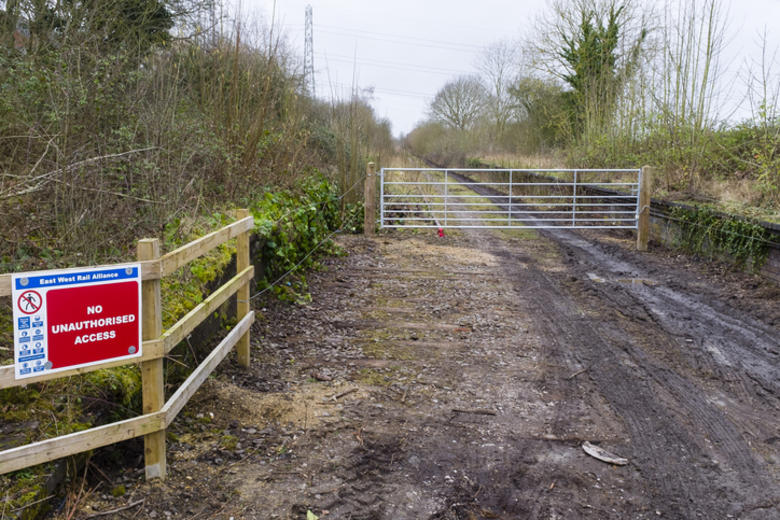PROTECTING HEDGEHOGS FROM ROBOTS

PROTECTING HEDGEHOGS FROM ROBOTS
Researchers led by the University of Oxford have developed a new test to assess how dangerous robotic lawnmowers are to hedgehogs.
Published: 16 January 2024
Share this article

It reads like a lighthearted subject but it’s existential for hedgehogs: how to avoid the lethal approach of most commercially sold robotic lawnmowers (nocturnal testing, right).
These are the ones you set up to roll evenly and autonomously across your lawn, saving hours of labour. They have exploded in popularity but they aren’t as clever as they might pretend to be.
Particularly at night, when the European hedgehog is most active, these lawnmowers typically run up and over them, either killing or maiming them terribly with cuts and lacerations.
QUAD visited this subject via a review feature of Dr Tom Moorhouse's 2023 book Ghosts in the Hedgerow, which sought to explain the steep decline in hedgehog numbers in recent decades.
Oxford researchers have developed a test that they hope will lead to a certification scheme that will allow consumers to choose ‘hedgehog-friendly’ mowers to help protect these lovable mammals.
Lead researcher Dr Sophie Lund Rasmussen, who is Carlsberg Junior Research Fellow at Linacre College and WildCRU, at the University of Oxford, also known as ‘Dr Hedgehog’, said: ‘There is an urgent need to identify and phase out models of robotic lawnmowers that pose a threat to hedgehogs. Our new standardised safety test will greatly aid hedgehog conservation, by enabling manufacturers of robotic lawnmowers to ensure their models are ‘hedgehog friendly’ before they are put on the market.’
Dr Rasmussen was inspired to develop the test after carrying out collision tests between robotic lawnmowers and dead hedgehogs. The dead hedgehogs had been collected from hedgehog rehabilitation centres, where they had died already.
Dr Rasmussen said: ‘All the robotic lawn mowers I tested had to physically touch the hedgehog in order to detect it, and some did not even detect the dead hedgehog. In mild cases, the robotic mower would lightly nudge the hedgehog then change direction, but in the worst-case scenario, the machine ran straight over it with the blades still running, causing extensive damage to the hedgehog carcass.’
The new safety test uses specially designed hedgehog ‘crash test dummies’ to find out whether a robotic lawnmower would be capable of avoiding a real hedgehog, and if not, how much damage it would cause in a collision.
To make sure the test was as realistic as possible, the researchers worked with a hedgehog rehabilitation centre in Denmark to establish how live hedgehogs, which had been in care and were ready for release back into the wild, tend to react to robotic lawnmowers. They tested the responses of fifty hedgehogs in an enclosed environment to a disarmed (bladeless) robotic lawnmower that was stopped 50 cm away from the hedgehog.
Overall, the hedgehogs showed three distinct responses: running away from the mower; standing rigidly in front of it partially curled up; or sniffing the lawnmower inquisitively. Generally, younger hedgehogs were more bold than adult hedgehogs.
Dr Rasmussen said: ‘Each hedgehog was tested twice and, interestingly, they tended to act more shyly on their second encounter. This is hugely important, since it suggests that hedgehogs may learn from their first encounter with a robotic lawnmower. Potentially, if a hedgehog survives its first encounter with a robotic lawnmower, it is less likely to be injured in the future because this may cause it to avoid them. So, the more hedgehog-friendly mowers out there, the more chance there is that the first mower a hedgehog meets is a hedgehog friendly one. If these hedgehogs meet a mower again later in their lives, they will then likely be more cautious.’
The researchers intend to make the crash test dummy design publicly available for 3D printing, so that robotic lawn mower companies can use it in the process of developing hedgehog friendly robotic lawnmowers. Ultimately, they hope that a fully-fledged certification scheme will be created, allowing consumers to choose ‘hedgehog-friendly’ models.
Dr Rasmussen added: ‘A key first step is to improve the sensors, so that they detect the hedgehogs and avoid them. Developing additional technologies such as camera recognition could eventually allow the robotic lawn mowers to detect hedgehogs at a distance and change direction before they get close. It is also important that the blades of the mowers are pivoting, so that they fold away under a protective surface when hitting something harder than grass.’
Dr Stephan Meyer, R&D manager at STIHL (one of the industry partners funding Dr Rasmussen’s research) and member of the project team said: ‘STIHL highly values the effect of these findings on the development of robotic lawn mowers, and we are using the learnings from this interactive project to improve the situation for people and animals. The results of the studies will form the scientific basis for the development of a safety standard to protect hedgehogs.’
A spokesperson from Husqvarna, another robotic lawnmower manufacturer funding Dr Rasmussen's research, said: ‘At Husqvarna we have a 30-year-old history in robotic lawn mowing and safety has always been our top priority. We were early to introduce the light-weight pivoting blades, which research has proven to be more “hedgehog-friendly”. Today, technology is moving faster than ever and all learnings we can get from the research conducted by Dr Rasmussen and her team will help us develop functions that will even more help to cater for keeping wildlife safe in our home gardens.’
Phasing out robotic lawnmowers that are a threat to hedgehogs is considered urgent by conservationists, and is another example of unintended consequences from improperly tested technology launched upon uninformed consumers.
For now, the advice to all consumers is to only run the mowers during the day, if at all, since hedgehogs are predominantly nocturnal.
Fay Vass, Chief Executive at the British Hedgehog Preservation Society added: ‘We are pleased to have been involved in funding this important piece of research. The population decline of hedgehogs is alarming and unsustainable so it is crucial to find out which potential dangers are actually causing problems, and which are not. Hopefully, the results of this work will stop or drastically reduce the risk of robotic lawnmowers causing harm to hedgehogs.’
Co-author of the study Dr Anne Berger (Leibniz Institute for Zoo and Wildlife Research, Germany), who has researched the frequency of hedgehog injuries from robotic lawnmowers in Germany, said: ‘Cut injuries from robotic lawnmowers are placing an enormous burden on many hedgehog care centres and using up important resources, as these injuries often require above-average care and treatment.’
In other words it is a terrible example of unwanted suffering that humans inflict on harmless mammals, in pursuit of convenience.
All images: University of Oxford/WildCru
The results of this work have been published in the journal Animals:
• ‘Testing the Impact of Robotic Lawn Mowers on European Hedgehogs (Erinaceus europaeus) and Designing a Safety Test.’ https://www.mdpi.com/2076-2615/14/1/122
• ‘Facing Danger: Exploring Personality and Reactions of European Hedgehogs (Erinaceus europaeus) towards Robotic Lawn Mowers.’ https://www.mdpi.com/2076-2615/14/1/2
This research was funded by Husqvarna; STIHL; the British Hedgehog Preservation Society; Carlsberg Foundation.
The following authors contributed to the studies:
• Sophie Lund Rasmussen and David W. Macdonald, WildCRU, Department of Biology, University of Oxford
• Bettina Thuland Schrøder and Elodie Floriane Briefer, Behavioral Ecology Group, Department of Biology, University of Copenhagen, Denmark
• Anne Berger and Rahel Sollmann, Leibniz Institute for Zoo and Wildlife Research, Germany
• Cino Pertoldi, Department of Chemistry and Bioscience, Aalborg University, Denmark and Aalborg Zoo, Denmark
• Aage Kristian Olsen Alstrup, Department of Nuclear Medicine and PET, Aarhus University Hospital, Denmark and Department of Clinical Medicine, Aarhus University, Denmark















